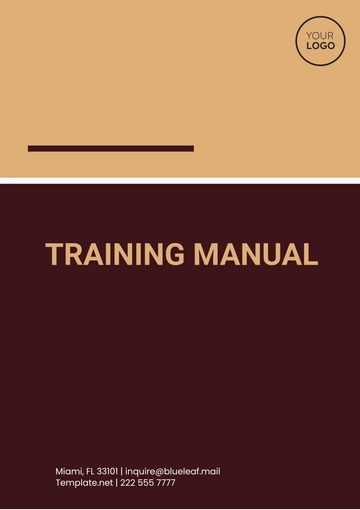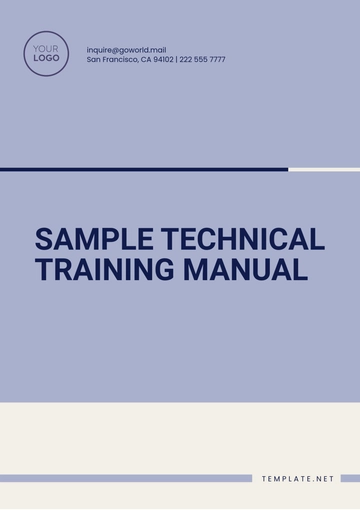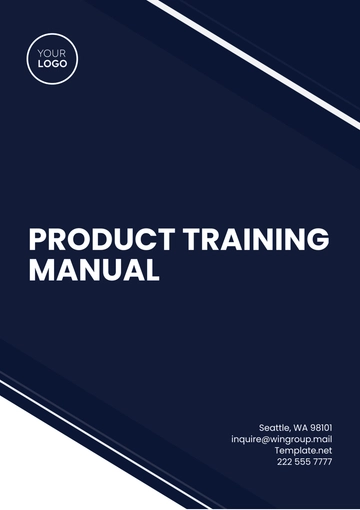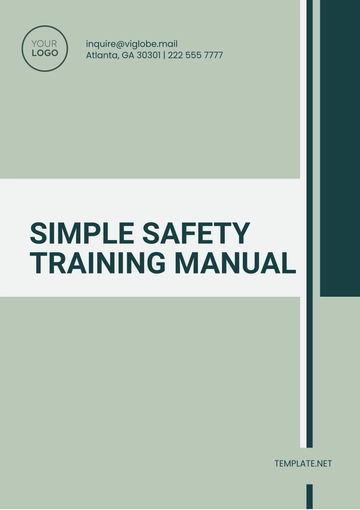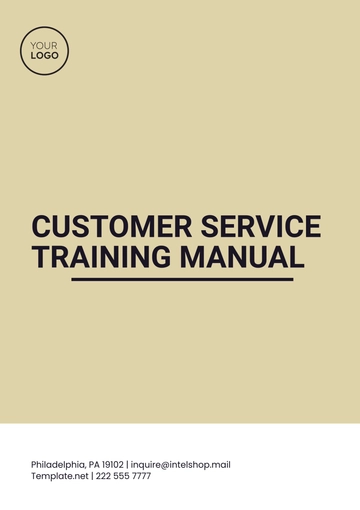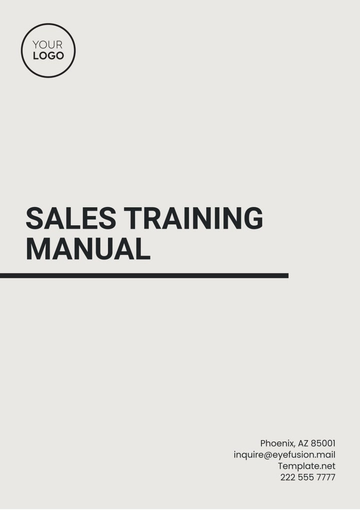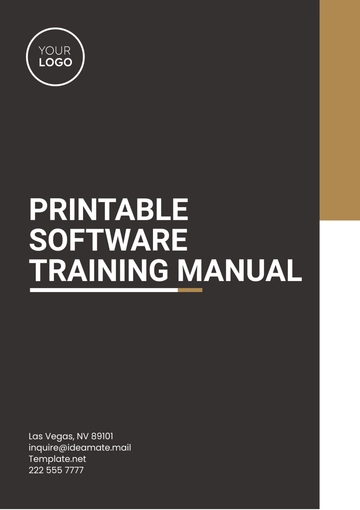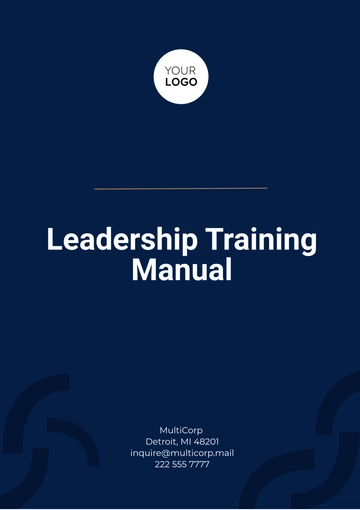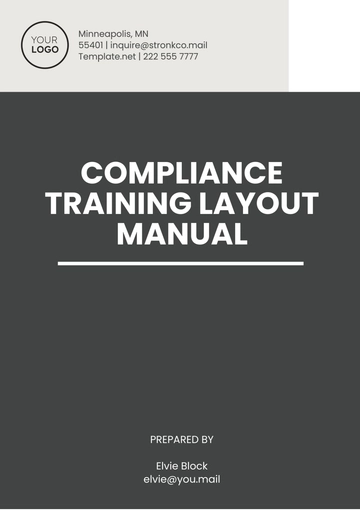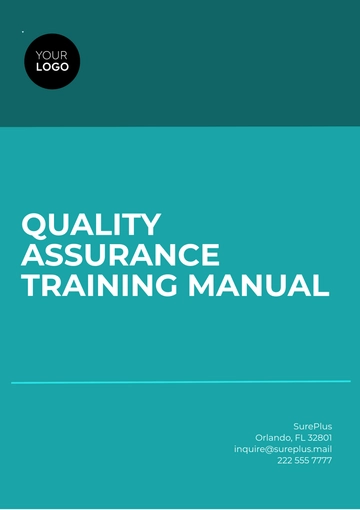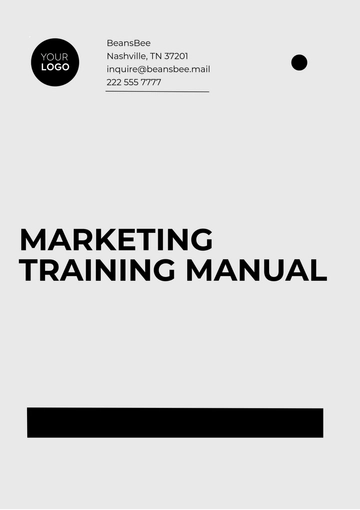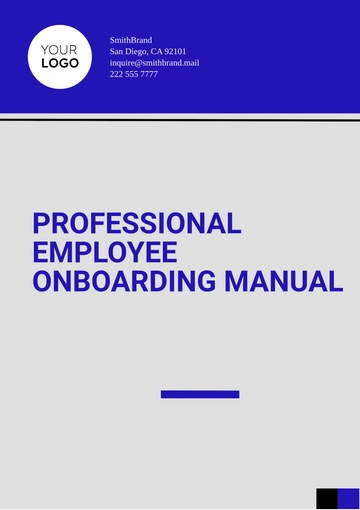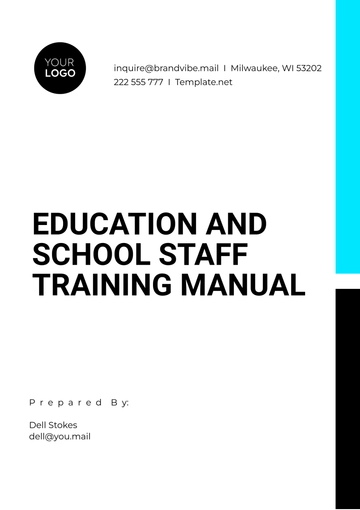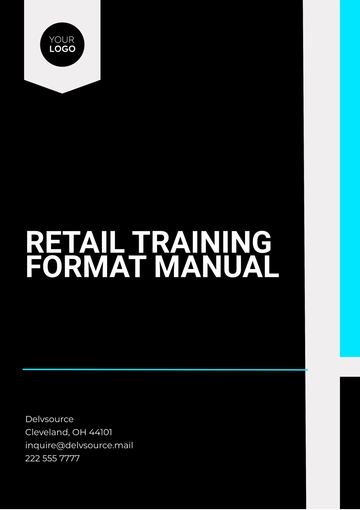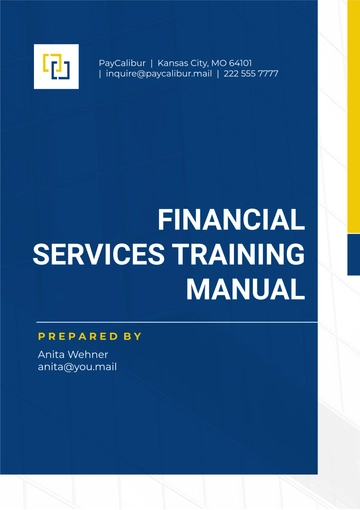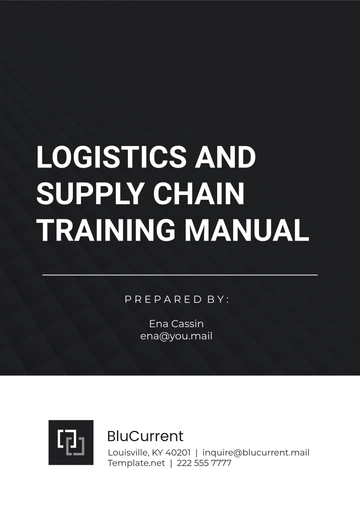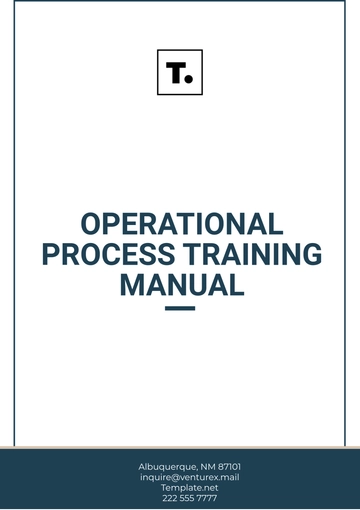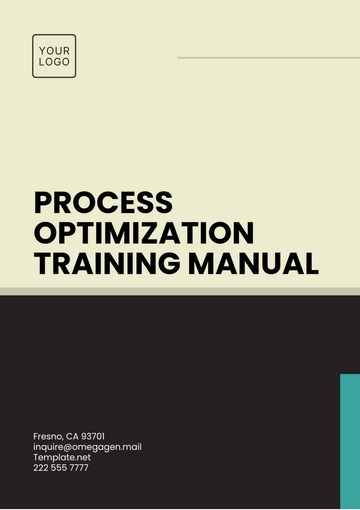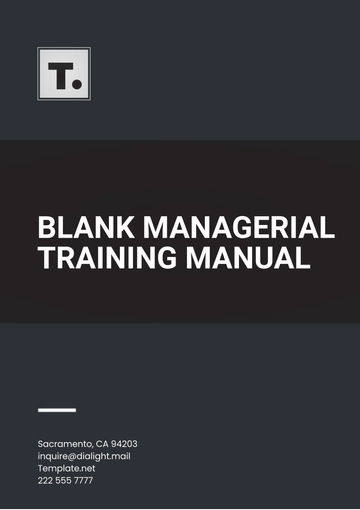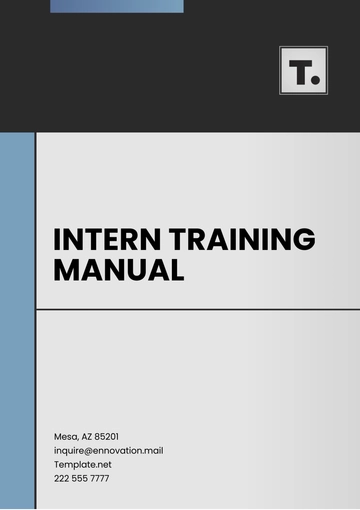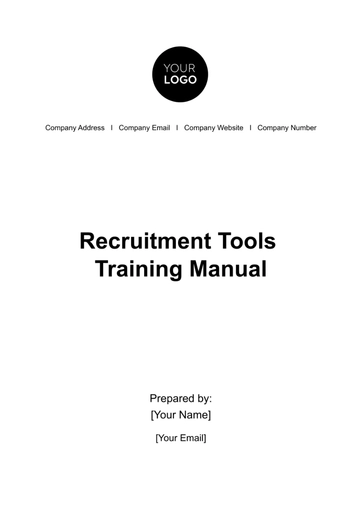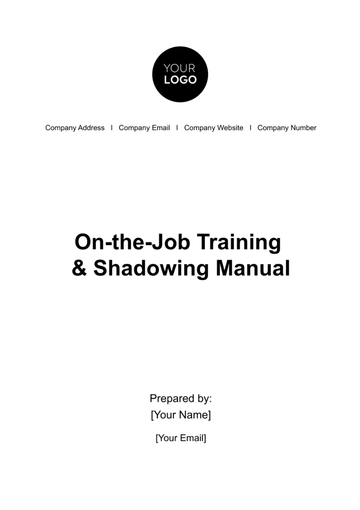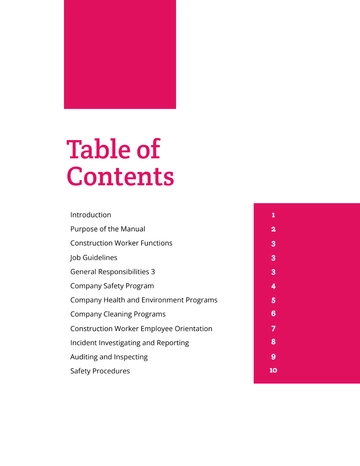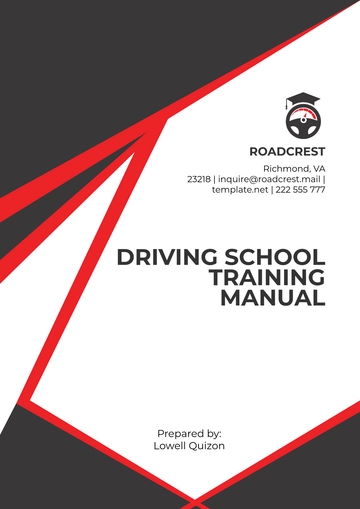Free Marketing Affiliate Training Manual
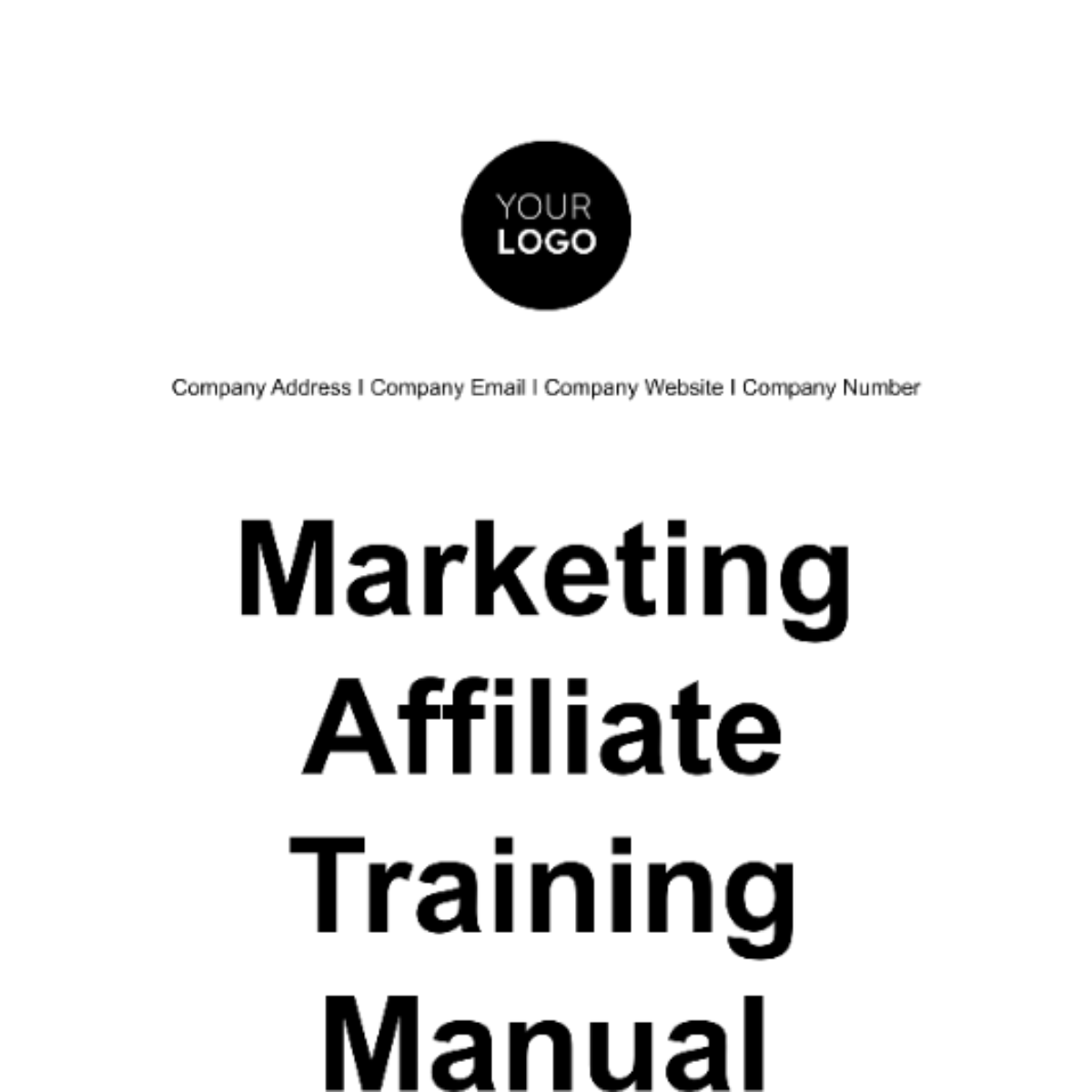
1. Introduction to Affiliate Marketing
What is Affiliate Marketing?
Explanation: Affiliate marketing is a performance-based marketing strategy where individuals (affiliates) promote products or services in exchange for commissions on sales or leads they generate.
Examples: Amazon Associates, ClickBank, and ShareASale are popular affiliate programs.
Actionable Tips: Understand the core concept of affiliate marketing and how it functions in the digital marketing landscape.
The Role of an Affiliate Marketer
Explanation: Affiliates play the role of intermediaries who connect consumers with products or services, earning commissions for successful referrals.
Examples: Affiliate marketers create content, share links, and drive traffic to the advertiser's website.
Actionable Tips: Learn how to effectively bridge the gap between consumers and products through marketing strategies.
Benefits of Affiliate Marketing
Explanation: Discuss the advantages of affiliate marketing, including low startup costs, passive income potential, and the ability to work from anywhere.
Examples: Successful affiliate marketers earn substantial income while enjoying flexible work schedules.
Actionable Tips: Understand the benefits and motivations behind becoming an affiliate marketer.
2. Getting Started
Setting Up Your Affiliate Marketing Business
Explanation: Outline the steps to establish your affiliate marketing business, including selecting a niche, setting up a website, and creating a content plan.
Examples: A niche could be "Fitness Products" within the broader health and wellness industry.
Actionable Tips: Plan your affiliate marketing business strategically, defining your target audience and goals.
Selecting a Niche and Products
Explanation: Explain the importance of choosing a niche and products that align with your interests, expertise, and market demand.
Examples: If you have a passion for tech gadgets, your niche could be "Consumer Electronics."
Actionable Tips: Research and select a niche and products that have growth potential and are a good fit for your expertise.
Understanding Affiliate Programs
Explanation: Describe what affiliate programs are, how they work, and the different types of compensation structures (e.g., pay-per-sale, pay-per-click, pay-per-lead).
Examples: Amazon Associates offers pay-per-sale commissions, while Google AdSense provides pay-per-click earnings.
Actionable Tips: Explore various affiliate programs to find the one that suits your niche and goals.
3. Legal and Ethical Considerations
Compliance with Regulations
Explanation: Discuss the importance of complying with regulations like the FTC's disclosure guidelines and GDPR in affiliate marketing.
Examples: Affiliate marketers must clearly disclose their relationship with advertisers in their content.
Actionable Tips: Familiarize yourself with legal requirements to avoid potential issues.
Ethical Affiliate Marketing Practices
Explanation: Highlight ethical practices, including promoting high-quality products, honesty in reviews, and avoiding spammy tactics.
Examples: Ethical affiliate marketers prioritize their audience's interests and deliver value through recommendations.
Actionable Tips: Build a reputation as a trustworthy affiliate by adhering to ethical guidelines.
Disclosures and Transparency
Explanation: Explain the need for transparent disclosures about affiliate relationships in content and how to implement them effectively.
Examples: Disclosures are often placed at the beginning or end of a blog post or in a dedicated disclosure page.
Actionable Tips: Create clear and concise affiliate relationship disclosures to build trust with your audience.
4. Choosing the Right Affiliate Programs
Researching Affiliate Programs
Explanation: Researching affiliate programs is a crucial step in your affiliate marketing journey. It involves evaluating the credibility and performance of affiliate programs to ensure they align with your goals.
Examples: Let's say you're in the health and wellness niche. You find two affiliate programs: Program A has been established for years, pays timely commissions, and has a positive reputation among affiliates. Program B is relatively new, lacks transparency, and offers high commissions but has negative reviews from affiliates.
Actionable Tips:
Check Online Reviews: Look for reviews and feedback from other affiliates to gauge the program's reputation.
Research the Advertiser: Investigate the product or service being promoted and its market demand.
Study the Terms: Review the program's terms and conditions, payment structure, and cookie duration.
Contact the Affiliate Manager: Reach out to the affiliate manager to ask questions and assess their responsiveness.
Evaluating Commission Structures
Explanation: Commission structures vary among affiliate programs. They determine how you'll be compensated for your efforts. Understanding these structures is vital for optimizing your earnings.
Examples: Consider Program X with a 5% commission on product sales and Program Y, offering a fixed $50 for every lead generated.
You need to evaluate which program aligns better with your niche and audience.
Actionable Tips:
Match Commissions to Your Audience: Consider your audience's purchasing behavior. If they're more likely to make purchases, choose a program with percentage-based commissions. If they're lead-focused, opt for flat fees.
Look for Tiered Commissions: Some programs offer tiered commissions, where you earn more for achieving higher sales targets.
Consider Recurring Commissions: If the product has a subscription model, recurring commissions can provide long-term income.
Affiliate Program Selection Criteria
Explanation: To make an informed choice, set clear criteria for selecting affiliate programs. These criteria ensure that the programs you join align with your niche, audience, and goals.
Examples: Your selection criteria might include:
Programs with a minimum of a 30-day cookie duration.
Programs with a track record of consistent, on-time payments.
Programs offering products or services that genuinely benefit your audience.
Actionable Tips:
Create a Checklist: Develop a checklist of your criteria, and use it to evaluate each affiliate program.
Prioritize Quality Over Quantity: It's better to promote a few high-quality programs than to join many that don't align with your audience.
Stay Informed: Continually monitor your selected programs to ensure they maintain the standards you set.
5. Effective Marketing Channels
Content Marketing
Explanation: Content marketing is a cornerstone of affiliate marketing. It involves creating valuable, informative, and engaging content to attract and educate your audience while promoting affiliate products subtly.
Examples: You operate a travel blog, and you've written a detailed guide on "The Top 10 Exotic Destinations for Adventure Lovers." Within this guide, you seamlessly incorporate affiliate links to relevant travel gear and booking platforms.
Actionable Tips:
Keyword Research: Use tools like Google Keyword Planner to discover high-demand keywords in your niche.
Solve Problems: Create content that addresses your audience's pain points or answers their questions.
Use Compelling CTAs: Include clear calls to action (CTAs) encouraging readers to explore affiliate products.
Email Marketing
Explanation: Email marketing allows you to build and nurture relationships with your audience through targeted email campaigns. It's a powerful tool for promoting affiliate products, especially those requiring multiple touchpoints.
Examples: Suppose you run a personal finance blog. You create an email series offering tips on saving money. Within these emails, you recommend budgeting tools and financial services, including affiliate links.
Actionable Tips:
Segment Your List: Divide your email subscribers into segments based on interests or behaviors to send more personalized content.
Provide Value: Ensure your emails offer value, whether through educational content or exclusive promotions.
Include Clear CTAs: Encourage readers to click affiliate links with persuasive and clear CTAs.
Social Media Marketing
Explanation: Social media platforms provide opportunities to reach and engage with your audience. You can subtly promote affiliate products by creating content that resonates with your followers.
Examples: As a fashion influencer, you showcase your outfits on Instagram and incorporate affiliate links to the clothing and accessories you wear.
Actionable Tips:
Choose the Right Platforms: Focus on social media platforms where your target audience spends the most time.
Consistency is Key: Regularly post content that aligns with your niche to maintain engagement.
Use Analytics: Analyze the performance of your social media posts to refine your content strategy.
Paid Advertising
Explanation: Paid advertising involves investing in advertising campaigns to promote affiliate products. This method provides more immediate visibility but requires careful budgeting and monitoring.
Examples: You set up a Google Ads campaign to promote a software product. When users click your ad and make a purchase, you earn a commission.
Actionable Tips:
Set a Budget: Determine how much you're willing to spend on advertising to avoid overspending.
Keyword Research: Conduct thorough keyword research to target the right audience.
A/B Testing: Continually test different ad variations to optimize your campaigns.
6. Creating Valuable Content
Blog Posts
Explanation: Blog posts are a staple of content marketing. They offer you a platform to provide in-depth information, share your expertise, and subtly promote affiliate products.
Examples: If you're in the tech niche, you can create detailed "How-To" guides, product reviews, and comparison articles with affiliate links.
Actionable Tips:
Keyword Optimization: Optimize blog posts for SEO by incorporating relevant keywords.
Solve Problems: Address your audience's issues or questions in your content.
Balanced Promotion: Integrate affiliate links naturally, avoiding excessive promotion.
Product Reviews
Explanation: Product reviews are a powerful way to showcase affiliate products. Provide honest and detailed reviews to help your audience make informed purchasing decisions.
Examples: In your review of a fitness tracker, include information on features, pros and cons, and your personal experience using the product.
Actionable Tips:
Personal Experience: Share your firsthand experiences and insights.
Visuals: Include images or videos of the product to enhance your review.
Honesty: Maintain transparency by mentioning both strengths and weaknesses.
Videos
Explanation: Videos are increasingly popular for affiliate marketing. Create engaging video content, such as product demonstrations, tutorials, and reviews, with embedded affiliate links.
Examples: If you're in the cooking niche, you can create video tutorials showcasing the use of kitchen gadgets and including affiliate links to purchase them.
Actionable Tips:
Engaging Thumbnails: Design eye-catching video thumbnails to encourage clicks.
Clear Call to Action: Encourage viewers to click affiliate links in the video or video description.
Consistency: Maintain a regular video upload schedule to keep your audience engaged.
Email Campaigns
Explanation: Email campaigns allow you to send targeted content and promotions to your subscribers. Use them to share affiliate product recommendations and exclusive deals.
Examples: Send a weekly newsletter featuring recommended products, promotions, and helpful content related to your niche.
Actionable Tips:
Segmentation: Divide your email list into segments based on interests or behaviors for personalized recommendations.
Value-Driven Content: Offer valuable information alongside affiliate promotions to keep subscribers engaged.
Time Sensitivity: Create a sense of urgency by highlighting limited-time deals in your email campaigns.
7. SEO and Keyword Research
Basics of SEO
Explanation: Search Engine Optimization (SEO) is the practice of optimizing your content and website to rank higher in search engine results. It's crucial for organic traffic.
Examples: Proper SEO techniques include optimizing meta titles, meta descriptions, and content for keywords.
Actionable Tips:
Keyword Research: Conduct keyword research to identify relevant and high-demand keywords in your niche.
On-Page SEO: Optimize your content by including keywords naturally, using headers, and improving website speed.
Off-Page SEO: Build backlinks from reputable websites to boost your SEO.
Keyword Research Tools
Explanation: Keyword research tools help you find the most valuable keywords for your content. They provide data on search volume, competition, and more.
Examples: Popular keyword research tools include Google Keyword Planner, SEMrush, and Ahrefs.
Actionable Tips:
Explore Tools: Experiment with various keyword research tools to find the one that suits your needs.
Long-Tail Keywords: Target long-tail keywords for less competition and more specific traffic.
On-Page and Off-Page SEO
Explanation: On-page SEO involves optimizing individual web pages for search engines, while off-page SEO focuses on activities outside your website to improve its ranking.
Examples: On-page SEO includes optimizing content, meta tags, and images. Off-page SEO includes link building and social media presence.
Actionable Tips:
Optimize Meta Tags: Craft compelling meta titles and descriptions with relevant keywords.
Quality Backlinks: Focus on building high-quality backlinks from authoritative sources for off-page SEO.
SEO Best Practices for Affiliate Marketers
Explanation: Affiliate marketers need to adhere to SEO best practices to ensure their content ranks well in search engines and drives organic traffic.
Examples: Best practices include avoiding duplicate content, optimizing for mobile, and improving site speed.
Actionable Tips:
Quality Content: Prioritize creating high-quality, informative content.
Mobile Optimization: Ensure your website is mobile-friendly for a better user experience.
Site Speed: Improve website loading times to reduce bounce rates and improve SEO.
8. Social Media Strategies
Leveraging Different Social Media Platforms
Explanation: Different social media platforms attract distinct demographics and types of content. Utilize the right platforms for your niche.
Examples: Instagram is ideal for visual niches like fashion and travel, while LinkedIn is better suited for B2B and professional niches.
Actionable Tips:
Audience Research: Identify where your target audience spends their time and focus on those platforms.
Platform Consistency: Maintain a consistent posting schedule and branding across social media platforms.
Building a Social Media Following
Explanation: Building a strong and engaged social media following is essential for effective promotion. A larger following means more potential affiliate conversions.
Examples: Engage with your followers by responding to comments, hosting Q&A sessions, and creating interactive content.
Actionable Tips:
Content Consistency: Post regularly to keep your audience engaged.
Engagement: Respond to comments, messages, and mentions to build rapport with your followers.
Creating Engaging Social Media Content
Explanation: Engaging content encourages interaction, shares, and click-throughs. Develop a content strategy that resonates with your followers.
Examples: Share user-generated content, run contests, and create visually appealing posts that feature affiliate products.
Actionable Tips:
Visual Appeal: Use high-quality images, videos, and graphics to capture your audience's attention.
Use Hashtags: Use relevant and trending hashtags to increase the visibility of your posts.
Using Social Media for Affiliate Marketing
Explanation: Social media is a powerful platform for affiliate marketing, allowing you to promote products organically or through paid advertising.
Examples: Create posts or stories showcasing affiliate products, run Facebook ads, or leverage influencer collaborations on platforms like Instagram.
Actionable Tips:
Transparency: Clearly disclose your affiliate relationship in compliance with legal regulations.
Track Performance: Use social media analytics to monitor the effectiveness of your affiliate marketing efforts.
9. Email Marketing and List Building
Building and Managing Email Lists
Explanation: Building an email list is essential for successful email marketing. Collect and manage subscribers who are interested in your niche.
Examples: Use opt-in forms on your website to collect email addresses. Segment your list based on subscriber preferences.
Actionable Tips:
Lead Magnets: Offer valuable content, such as e-books or courses, in exchange for email subscriptions.
Clean Your List: Regularly remove inactive or unengaged subscribers to maintain list quality.
- 100% Customizable, free editor
- Access 1 Million+ Templates, photo’s & graphics
- Download or share as a template
- Click and replace photos, graphics, text, backgrounds
- Resize, crop, AI write & more
- Access advanced editor
Discover success in affiliate marketing with the Marketing Affiliate Training Manual Template from Template.net. This editable and customizable guide empowers you to tailor strategies for optimal results. With seamless editing in our Ai Editor Tool, personalize every detail effortlessly. Elevate your affiliate marketing journey with a resource designed for your unique success story.
